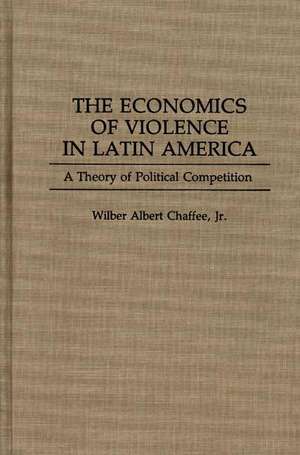The Economics of Violence in Latin America: A Theory of Political Competition
Autor Wilber A. Chaffeeen Limba Engleză Hardback – 29 sep 1992 – vârsta până la 17 ani
Preț: 346.00 lei
Preț vechi: 556.45 lei
-38% Nou
Puncte Express: 519
Preț estimativ în valută:
66.21€ • 68.71$ • 55.34£
66.21€ • 68.71$ • 55.34£
Carte tipărită la comandă
Livrare economică 18 martie-01 aprilie
Preluare comenzi: 021 569.72.76
Specificații
ISBN-13: 9780275942984
ISBN-10: 0275942988
Pagini: 184
Dimensiuni: 156 x 235 x 20 mm
Greutate: 0.46 kg
Ediția:New.
Editura: Bloomsbury Publishing
Colecția Praeger
Locul publicării:New York, United States
ISBN-10: 0275942988
Pagini: 184
Dimensiuni: 156 x 235 x 20 mm
Greutate: 0.46 kg
Ediția:New.
Editura: Bloomsbury Publishing
Colecția Praeger
Locul publicării:New York, United States
Notă biografică
WILBER ALBERT CHAFFEE, JR., is Professor and Chair in the Department of Government at Saint Mary's College in Moraga, California. He co-edited, with G. Prevost, Cuba: A Different America, second edition (1992). He coedited, with Stanley R. Ross, Guide to the Hispanic American Historical Review, 1957-1975 (1980).
Cuprins
IntroductionA Question of TheoryLatin America's RevolutionsPolitical EntrepreneursPolitical CompetitionThe Dilemma of Political CompetitionPolitical Development and the Institutionalization of Political EntrepreneurshipThe Calculus of ParticipationComparisons and ImplicationsSelected BibliographyIndex












